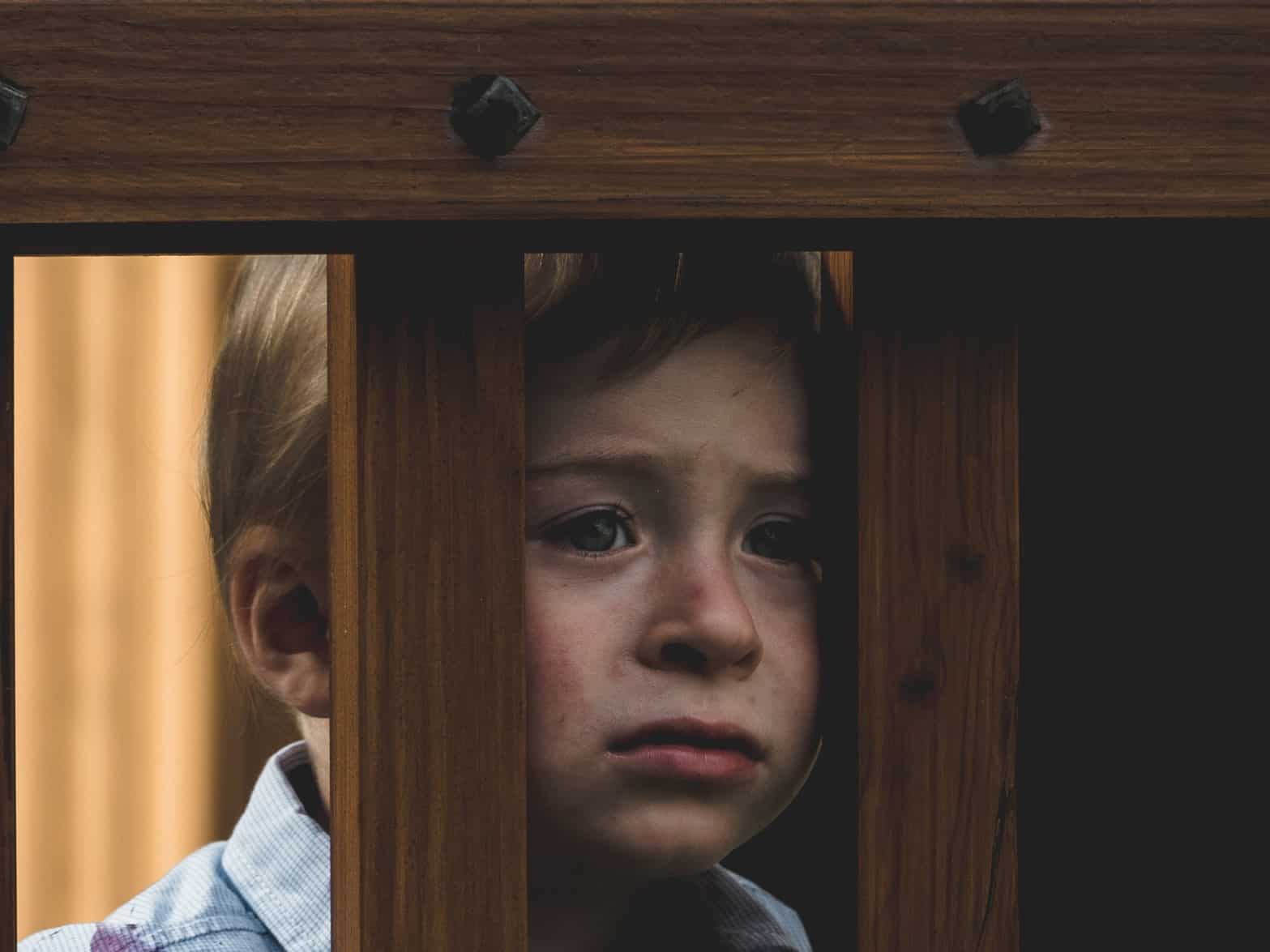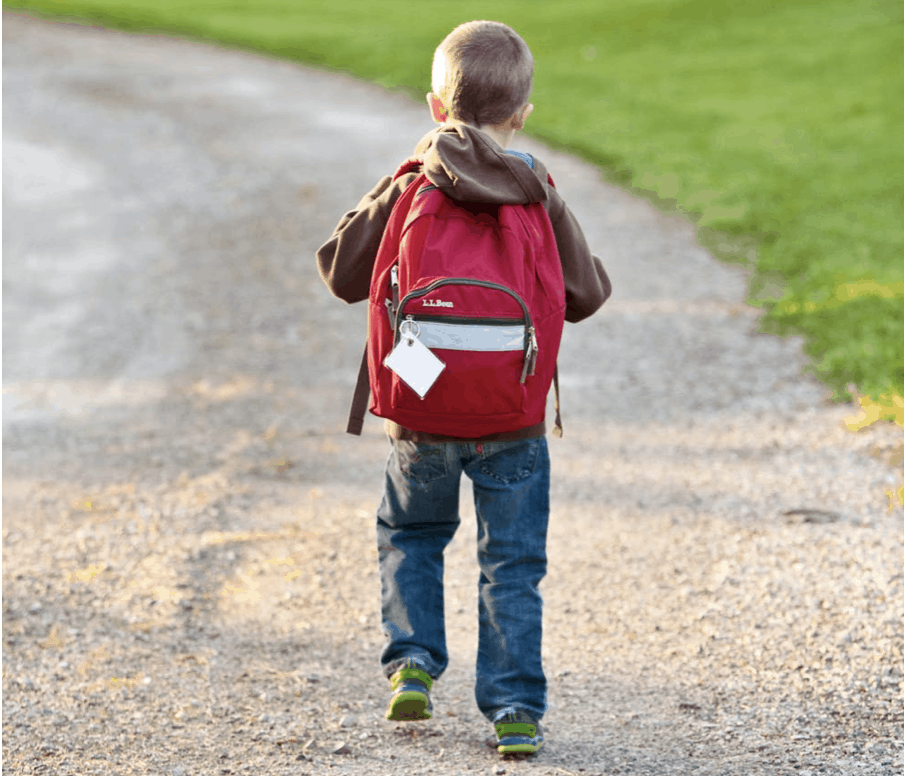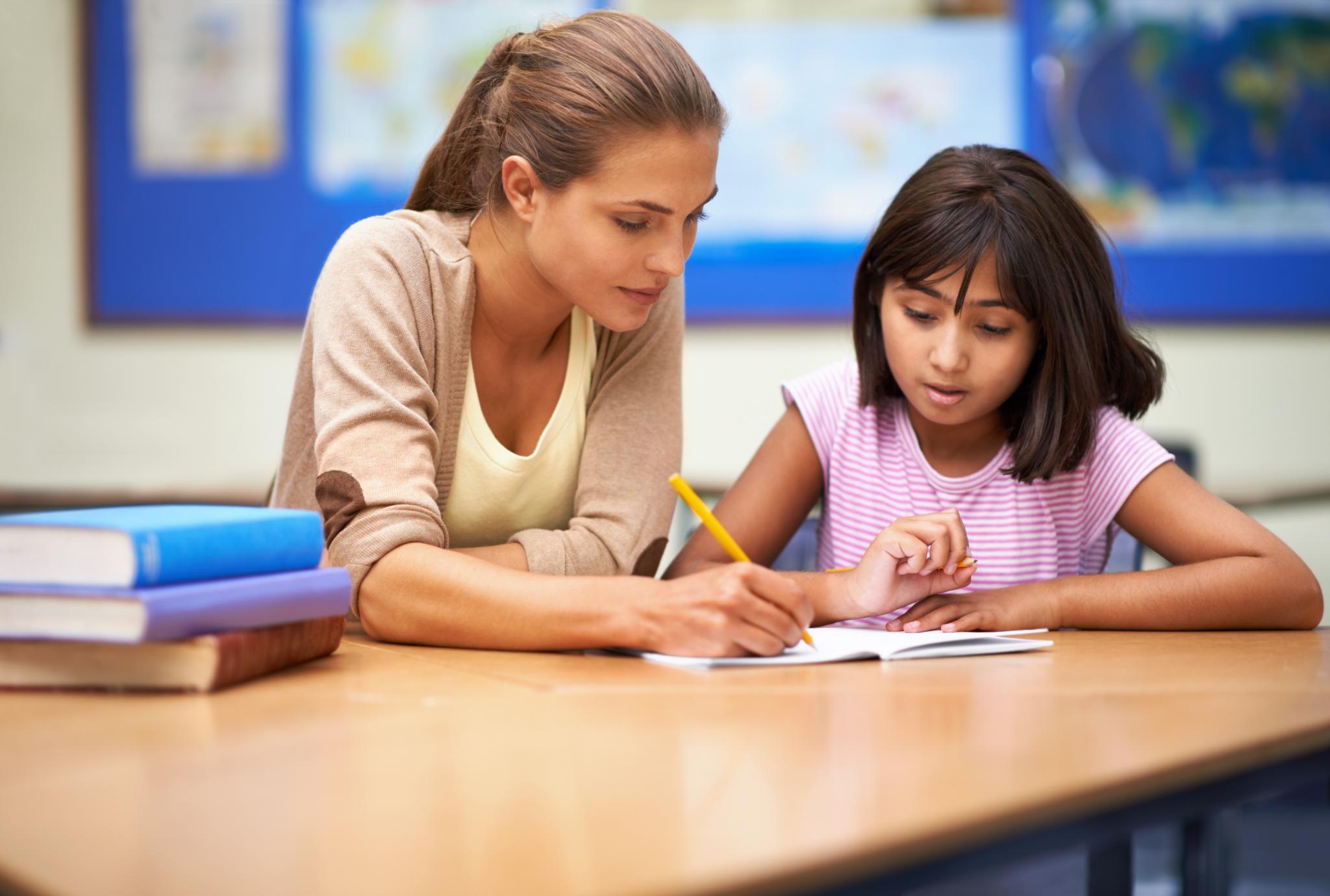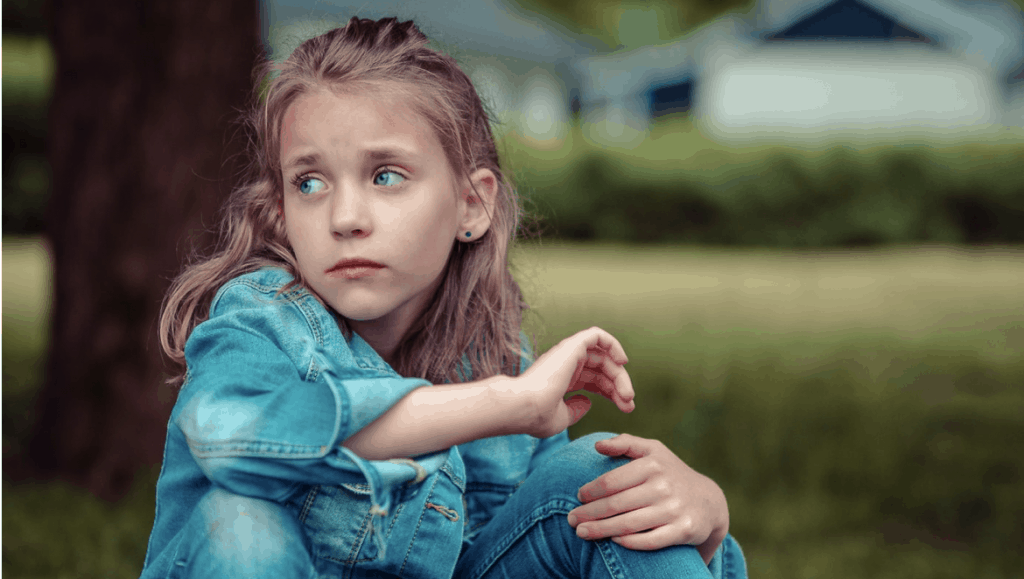Did you know that over one-half of all students will experience a traumatic event by the time they reach adulthood?[8] Each year, educators teach several students who have dealt with trauma in some way. You may not know which children in a classroom have experienced trauma, but the way your school reacts to and supports these students can have lasting consequences.
Children with these experiences often exhibit learning or behavioral issues related to the way trauma influences brain development. For this reason, it’s important to treat every child with compassion and consider the roots of their actions. The question we should approach students with should never be, “What’s wrong with you?” Instead think, “What happened that influenced your current behavior?” [5]
In this article, we’ll go over a few causes and examples of childhood trauma and the lasting academic and social-emotional impact trauma can have on a student. Then, we’ll discuss the importance of implementing trauma-informed practices in all schools.
Defining Childhood Trauma
 Trauma is defined as a response to a negative event or series of events that surpasses a child’s ordinary adaptive skills.[6] These events can overwhelm a child’s stress response and coping mechanisms, especially in the absence of support from caregivers.[14] Because of the way childhood trauma affects the brain, it can seriously inhibit a child’s well-being—especially if the child has no access to support.
Trauma is defined as a response to a negative event or series of events that surpasses a child’s ordinary adaptive skills.[6] These events can overwhelm a child’s stress response and coping mechanisms, especially in the absence of support from caregivers.[14] Because of the way childhood trauma affects the brain, it can seriously inhibit a child’s well-being—especially if the child has no access to support.
It’s estimated that one-half to two-thirds of all students will experience some form of childhood trauma.[8] These statistics mean that by high school, more students will have dealt with some form of trauma than have not. Additionally, over one-third of children will experience two or more traumatic experiences and as many as 11% will experience five or more.[10]
Educational researchers often refer to childhood trauma as adverse childhood experiences (ACEs). An ACE is any traumatic event that occurs in childhood, which is defined as ages 0 to17. It’s important for schools to be aware of students who experience ACEs and provide individualized support for needs related to their lasting trauma.
Causes and Examples of Childhood Trauma
Childhood trauma can take many forms and affects children in unique ways depending on factors like their age or stage of brain development. Their personality, previous history of trauma, school and family supports, and relationship to the source of their trauma also impact the child.[7]
A few examples (though not a complete list) of childhood trauma a student may experience include:[2,6]
- Domestic abuse or community violence
- Childhood neglect
- Living with mentally or physically ill family members
- Having a mental or physical illness
- Loss of a loved one
ACEs generally refers to trauma experienced at home, but in some cases the trauma can happen at school. One study found, for example, that between 56% and 87% of students had witnessed someone being physically assaulted at school over the past year.[9] If an experience leaves a serious and lasting impact on a child and influences their learning or behavior, it may fall under the ACEs umbrella.
ACEs have such an adverse effect on childhood development because of the human stress system. When exposed to a stressor, our brains respond in ways that release stress hormones. In small doses, these hormones can help us cope with challenging situations. But high or repeated exposure to stress hormones can lead to an over-reactive stress system and negatively influence brain development.[12]
The Academic and Social-Emotional Effects of Childhood Trauma
The effects of early childhood trauma can be profound and last well into adulthood. When trauma occurs during a child’s early years, it can impact or limit brain development and result in cognitive or social-emotional impairments.[11]
The areas most likely to be affected in childhood are the hippocampus, prefrontal cortex, and amygdala, which control the following abilities, respectively:[12,15]
- Learning and memory
- Decision-making, attention, and self-regulation
- Emotional regulation
 How does the impact of trauma on childhood development manifest in schools? Children exposed to ACEs are significantly more likely to experience academic or social-emotional issues than their peers. Students with traumatic experiences, for example, are 32 times more likely to have a learning disorder or exhibit behavioral problems in class.[15]
How does the impact of trauma on childhood development manifest in schools? Children exposed to ACEs are significantly more likely to experience academic or social-emotional issues than their peers. Students with traumatic experiences, for example, are 32 times more likely to have a learning disorder or exhibit behavioral problems in class.[15]
Because ACEs affect learning and memory, these students are also more likely to be retained a grade or put in a special education class.[16] Because these children have a harder time managing their emotions and responding to social cues, they’re more likely to withdraw from social situations or act out in class.[13] Students who experience trauma also suffer from chronic absenteeism more often than their classmates, in part because of the unique challenges they face in class.[16]
It can be helpful for educators to screen students via a childhood trauma questionnaire administered by professionals and watch for signs throughout the year.[4] That way, they have a better picture of what their students are dealing with and how to help.
A few signs of childhood trauma to look for include:[19]
- Anxiety or irritability
- Withdrawal from peers and activities
- Inability to concentrate
- Changes in school performance
- Chronic absenteeism
How Trauma-Informed Practice in Schools Can Help Students Heal
Because there are many children at every school who have experienced trauma, it’s important for districts to implement trauma-informed practices.[5] But what is trauma-informed care? This refers to any intervention used to address the unique needs of trauma-exposed children—such as emotional support or training sessions for educators.[3] These practices help educators understand how to help a child with trauma and refer them to appropriate resources. Additionally, they often involve a sense of consistency or routine to help the child feel secure.[17]
Trauma-informed practices in the classroom can also include smaller measures, like providing books that reflect the experiences of trauma-exposed children. A few examples of children’s books on trauma include:
- Healing Days: A Guide for Kids Who Have Experienced Trauma by Susan Farber Straus (healing from trauma)
- One April Morning: Children Remember the Oklahoma City Bombing by Nancy Lamb (community violence)
- The Sad Book by Michael Rosen (processing grief and sadness)
- Stones for Grandpa by Renee Londner (losing a loved one)
- You Are The Best Medicine by Julie Aigner Clark (caring for an ill parent)
It’s common for children who have experienced ACEs to have learning or behavioral challenges that make it difficult for them to focus in class. Trauma-informed practices focus on not just responding to how a child behaves but on what they’ve experienced and how to best provide support.[5] That could look like anything from providing extra time on assignments or breathing room in class or referring the student to a professional, like a therapist who specializes in childhood trauma. And as educators do so, student behavior tends to improve. One study found that schools who used a trauma-informed approach to behavioral issues saw an 83% drop in suspensions and a 40% drop in expulsions.[17]
 Addressing the needs of children who have endured ACEs can not only improve their academic progress but also their overall life outcomes.[1] Students who receive trauma-specific treatment often have improved school attendance, academic grades, and social-emotional development.[1,18] These students feel more comfortable in school and equipped to handle residual trauma that makes learning difficult.
Addressing the needs of children who have endured ACEs can not only improve their academic progress but also their overall life outcomes.[1] Students who receive trauma-specific treatment often have improved school attendance, academic grades, and social-emotional development.[1,18] These students feel more comfortable in school and equipped to handle residual trauma that makes learning difficult.
Trauma-informed practices can be a crucial way to help students who might otherwise struggle in class because of trauma. If educators can recognize ACE-affected students and support them however possible, through in-class accommodations or a referral to a trauma specialist, for example, then schools will become safer and better equipped to serve all children.
Sources:
- Crosby, S.D. An Ecological Perspective on Emerging Trauma-Informed Teaching Practices. Children & Schools, October 2015, 37(4), 223-230.
- Walkley, M., and Cox, T.L. Building Trauma-Informed Schools and Communities. Children & Schools, April 2013, 35(2), pp. 123-126.
- Phifer, L.W., and Hull, R. Helping Students Heal: Observations of Trauma-Informed Practices in the Schools. School Mental Health, February 2016, 8(1), pp. 201-205.
- Ko, S. J., Ford, J. D., Kassam-Adams, N., Berkowitz, S. J., Wilson, C., Wong, M., Brymer, M.J., and Layne, C. M. Creating trauma-informed systems: Child welfare, education, first responders, health care, juvenile justice. Professional Psychology: Research and Practice, 2008, 39(4), pp. 396-404.
- McInerney, M., and McKlindon, A. Unlocking the Door to Learning: Trauma-Informed Classrooms & Transformational Schools. Retrieved from codmanacademy.org: https://www.codmanacademy.org/PDF/Trauma-Informed-in-Schools-Classrooms-FINAL-December2014-2.pdf
- Terr, L.C. Childhood traumas: An outline and overview. The American Journal of Psychiatry, 1991, 148(1), pp. 10-20.
- Cole, S.F., O’Brien, J.G., Gadd, M.G., Ristuccia, J., Wallace, D.L., and Gregory, M. Helping Traumatized Children Learn: Supportive School Environments for Children Traumatized by Family Violence. Retrieved from traumasensitiveschools.org: https://traumasensitiveschools.org/wp-content/uploads/2013/06/Helping-Traumatized-Children-Learn.pdf.
- Copeland, W.E., Keeler, G., Angold, A., & Costello, E.J. Traumatic events and posttraumatic stress in childhood. Archives of General Psychiatry, 2007, 64(5), pp. 577-584.
- Flannery, D.J., Wester, K.L., and Singer, M.I. Impact of exposure to violence in school on child and adolescent mental health and behavior. Journal of Community Psychology, September 2004, 32(5), pp. 559-573.
- Finkelhor, D., Turner, H., Ormrod, R., Hamby, S., and Kracke, K. Children’s exposure to violence: A comprehensive national survey. Retrieved from ncjrs.gov: https://www.ncjrs.gov/pdffiles1/ojjdp/227744.pdf.
- Andersen, S.L., & Teicher, M.H. Stress, sensitive periods and maturational events in adolescent depression. Trends in Neurosciences, 2008, 31(4), pp. 183-191
- Shonkoff, J.P., and Garner, A.S. The lifelong effects of early childhood adversity and toxic stress. Pediatrics, January 2012, 129(1), pp. 232-246.
- Van der Kolk, B. The neurobiology of childhood trauma and abuse. Child and Adolescent Psychiatric Clinics of North America, 2003, 12(2), pp. 293-317.
- Harvard University Center On the Developing Child. Toxic Stress. Retrieved from harvard.edu: https://developingchild.harvard.edu/science/key-concepts/toxic-stress/.
- Burke, N.J., Hellman, J.L., Scott, B.G., Weems, C.F., and Carrion, V.G. The impact of adverse childhood experiences on an urban pediatric population. Child Abuse & Neglect, 2011, 35(6), pp. 408-413.
- Shonk, S.M., and Cicchetti, D. Maltreatment, competency deficits, and risk for academic and behavioral maladjustment. Developmental Psychology, 2001, 37(1), pp. 3-17.
- Stevens, J.E. Trauma-Sensitive Schools Are Better Schools. Retrieved from huffpost.com: https://www.huffpost.com/entry/trauma-sensitive-schools_b_1625924.
- Substance Abuse and Mental Health Services Administration. Results from the 2011 National Survey on Drug Use and Health: Mental Health Findings. Retrieved from samhsa.gov: https://www.samhsa.gov/data/sites/default/files/NSDUHmhfr2011/NSDUHmhfr2011.pdf.
- Substance Abuse and Mental Health Services. Recognizing and Treating Child Traumatic Stress. Retrieved from samhsa.gov: https://www.samhsa.gov/child-trauma/recognizing-and-treating-child-traumatic-stress.
- Center for Disease Control and Prevention. About Adverse Childhood Experiences. Retrieved from cdc.gov: https://www.cdc.gov/violenceprevention/childabuseandneglect/acestudy/aboutace.html.

